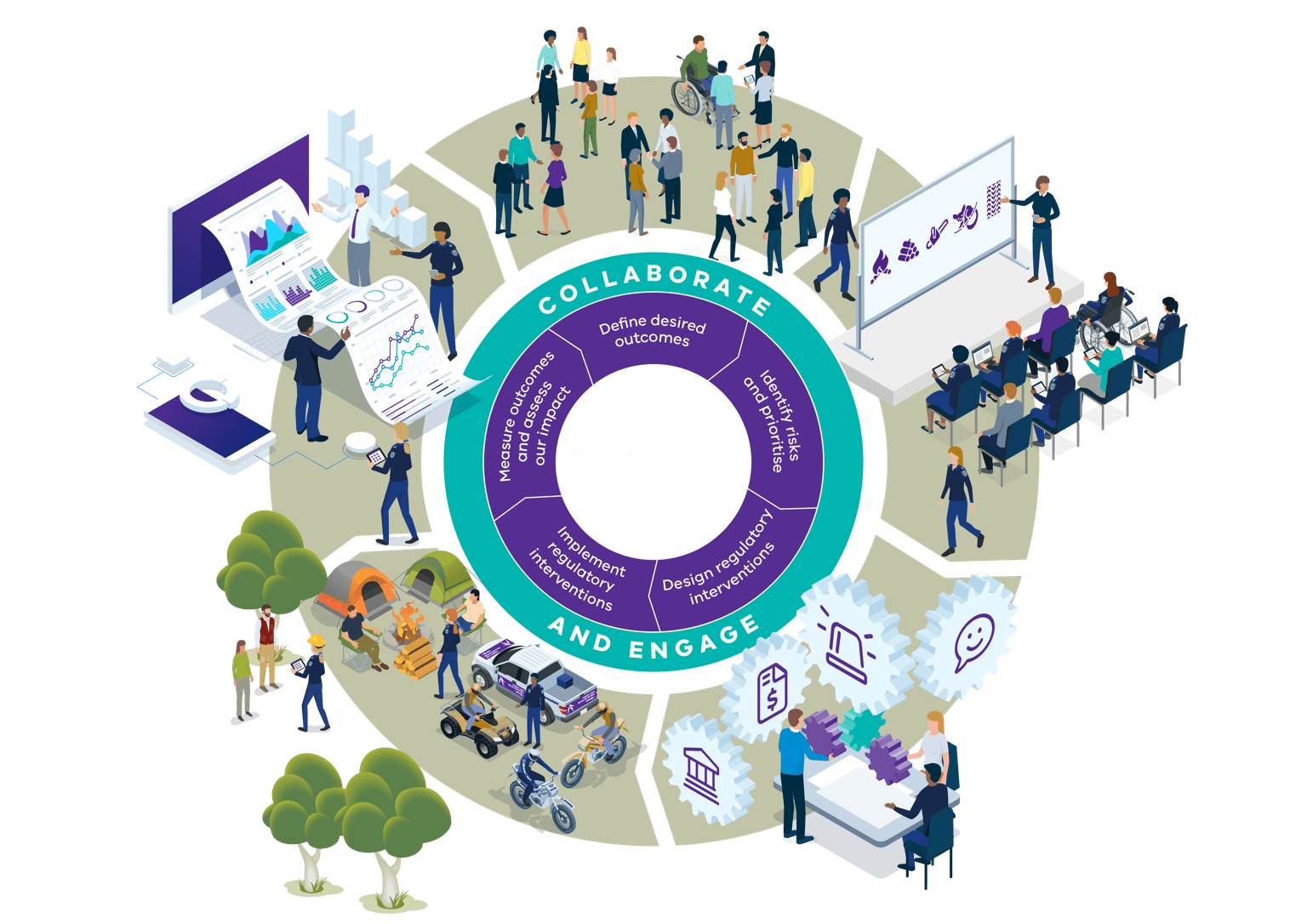The Conservation Regulator oversees the regulation of timber harvesting, public land use, biodiversity and fire prevention. We are a specialist regulator, established within the Department of Environment, Land, Water and Planning (DELWP).
Now in our third year of operation, the Conservation Regulator continues to strive to improve our regulatory practice and operation. We continue to focus on opportunities for collaboration and strengthening our relationships with Victorian communities, Traditional Owners, co-regulators and other stakeholders.
Our mission
To be an effective, trusted, best practice regulator
Our vision
To create and maintain liveable, inclusive, sustainable communities and thriving natural environments
Our regulatory outcomes
We regulate to achieve three key outcomes:
- Equitable and safe access to public land and use of natural resources
- Protected natural and heritage values
- Sustainable communities – social, economic and environmental
Our regulatory approach is central to articulating how we will undertake our regulatory role, in order to achieve the key outcomes outlined above.
In 2021-22 we refined our priorities to direct our effort to where our intelligence says the greatest compliance and environmental risks lie. Visitation numbers to public land since the onset of the pandemic continued to remain high.
We also saw increases in the sales of off-road vehicles, higher demand for wildlife as pets, and change in energy demands leading to increased take of firewood, particularly while more people spent time at home during the pandemic.
Given these trends, we refocused our regulatory efforts on five updated regulatory priorities. Progress on our regulatory priorities outlines our progress against addressing each of these regulatory priorities.
Our compliance and enforcement approach
The Conservation Regulator focuses its effort on where there are the most significant risks in order to maximise the outcomes achieved. We do this by considering:
- the level of risk non-compliance poses to our regulatory outcomes
- our ability to reduce risk to our regulatory outcomes
- the most effective use of our regulatory resources.
If illegal activity is detected, we use a measured approach to determine our response. It is not practical or appropriate to take compliance and enforcement action in response to every alleged or suspected breach of the law. Depending on the risk of harm and the attitude or behaviour of the person or entity breaking the law we may:
- assist, help or educate the regulated entity
- apply penalties
- apply the full force of the law.
We monitor compliance with the law to prevent harm to the environment wherever possible. Through monitoring we identify non-compliance and maintain a credible threat of detecting those who are engaging in illegal activities.
We also undertake preventative work, such as raising awareness of regulatory requirements and how to comply with the law, and we respond to reports of crime as they arise.
Updated



